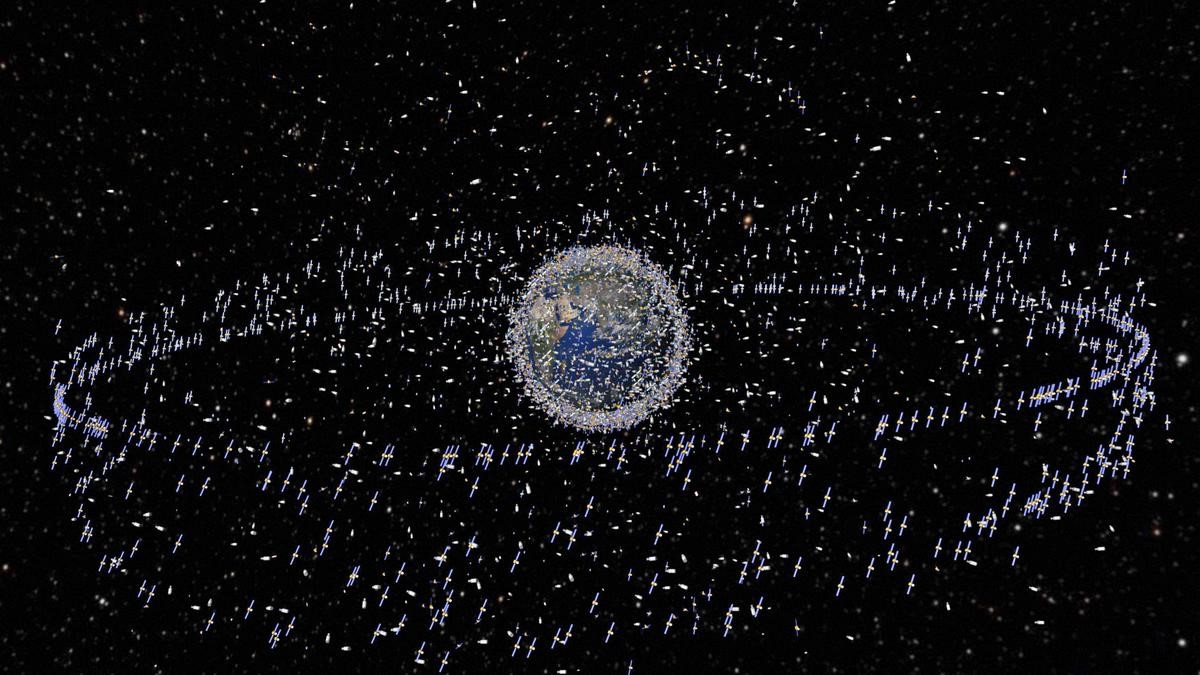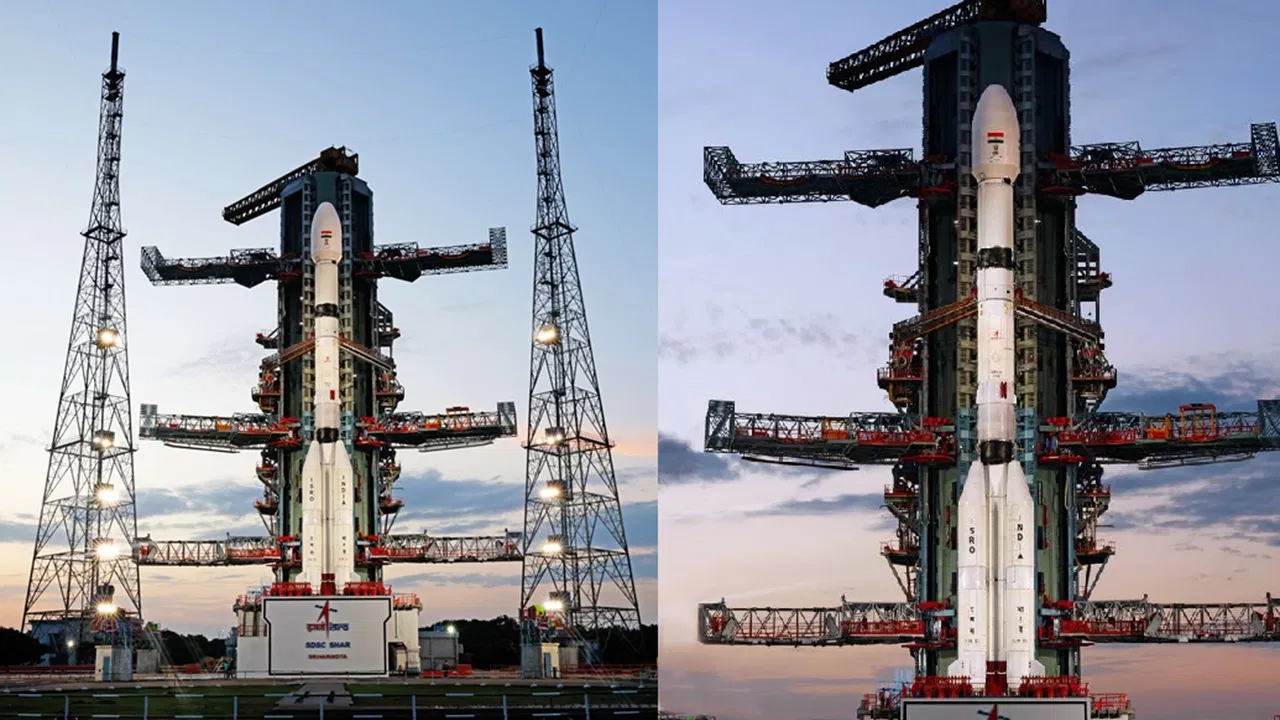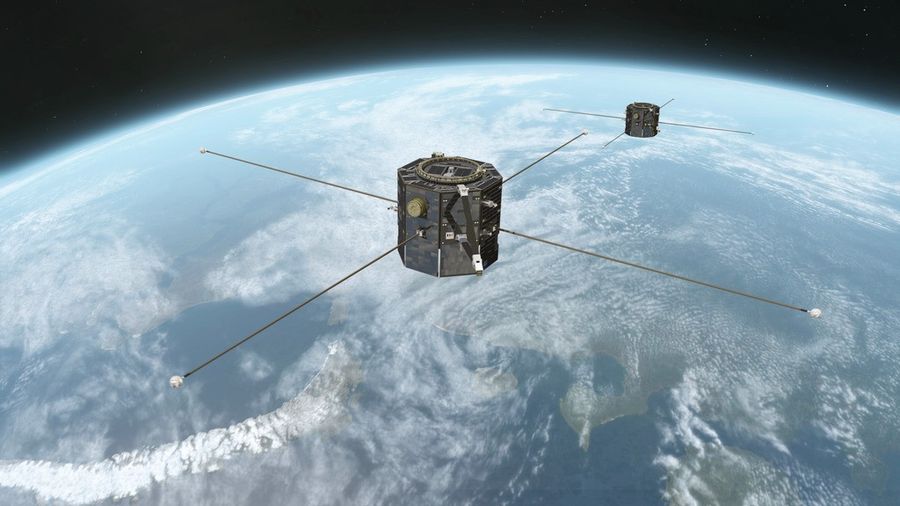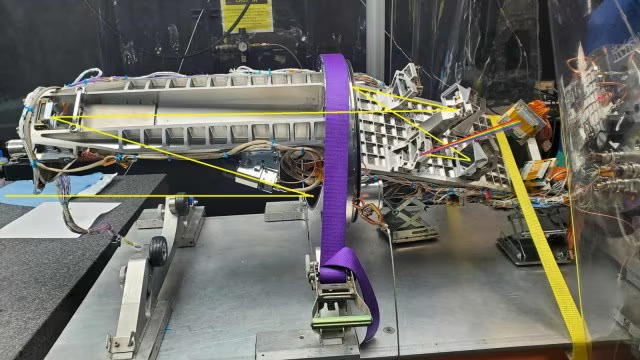Description

Source: Hindu
Disclaimer: Copyright infringement not intended.
Context
- The Indian Space Research Organisation (ISRO) recently conducted the PSLV-C58/XPoSat mission, which has been highlighted for its innovative approach to minimizing space debris.
Details
- PSLV-C58/XPoSat Mission: Conducted by ISRO, this mission aimed to deploy multiple satellites into their designated orbits using the Polar Satellite Launch Vehicle (PSLV).
Minimization of Space Debris
- PSLV Orbital Experimental Module-3 (POEM-3): ISRO transformed the fourth stage of the PSLV into a special orbital station known as POEM-3.
- Purpose: POEM-3 served as a platform to test technologies and strategies for reducing space debris.
- De-orbiting Strategy: After completing its primary mission of deploying all satellites, the fourth stage was de-orbited from 650 kilometers to 350 kilometers above Earth's surface.
- Increased Susceptibility: By lowering its altitude, the stage became more prone to atmospheric drag, hastening its re-entry into Earth's atmosphere.
Passivation of the Stage:
- Fuel Dumping: ISRO "passivated the stage" by expelling any remaining fuel, eliminating the risk of explosion.
- Purpose: This measure was crucial in preventing the stage from breaking apart and generating additional debris.
Benefits of the Approach:
- Minimal Debris: By transforming the fourth stage into POEM-3 and passivating it before de-orbiting, ISRO ensured that virtually no debris remained in Earth's orbit.
- Reduced Risk to Space Assets: The removal of debris minimizes the risk of collisions with operational satellites and spacecraft, safeguarding space assets.
Environmental Impact:
- Atmospheric Re-entry: The de-orbited stage, now devoid of fuel and other hazardous materials, safely re-enters Earth's atmosphere.
- Burn-Up: Upon re-entry, the stage undergoes intense heat and friction, causing it to burn up completely and disintegrate into harmless particles.

About POEM
Purpose and Development:
- Inexpensive Space Platform: POEM serves as a cost-effective orbital platform, utilizing the spent fourth stage of a Polar Satellite Launch Vehicle (PSLV) rocket for scientific experiments and technology demonstrations.
- VSSC Development: Developed by the Vikram Sarabhai Space Centre, POEM aims to maximize the utility of launch vehicles by repurposing spent stages for in-orbit operations.
Key Features:
- Power Source: POEM is powered by solar panels mounted on the fuel tank of the rocket's fourth stage, supplemented by a lithium-ion (Li-ion) battery for continuous operation.
- Navigation and Control System: It features a dedicated navigation, guidance, and control (NGC) system equipped with Sun sensors, a magnetometer, gyroscopes, and helium control thrusters to maintain altitude stability.
- Communication System: POEM is equipped with a telecommand system to establish communication with ground stations for data transmission and control.
- In-Orbit Experiments: POEM serves as a platform for conducting in-orbit scientific experiments and technology demonstrations with various payloads.
- Payload Deployment: It facilitates the deployment of payloads into specific orbits for observation and data collection.
Operational History:
- PSLV-C53 Mission: POEM was first utilized in the PSLV-C53 mission launched in June 2022, where it served as a stabilized platform for scientific experiments.
- PSLV C-44 Mission: ISRO previously demonstrated the reuse of the spent fourth stage in the PSLV C-44 mission in 2019, showcasing the feasibility of repurposing rocket stages for extended operations.
Achievements:
- POEM-3, the PSLV Orbital Experimental Module deployed during the PSLV C-58 mission, achieved several significant milestones during its operational phase.
Payloads and Experiments:
- Nine Payloads: POEM-3 carried a total of nine payloads, including contributions from VSSC, Bellatrix Aerospace Pvt Ltd, and several startups and research institutions.
- Experimental Objectives: The payloads conducted a variety of experiments, including ARKA200, RUDRA, LEAP-TD, WeSAT, RSEM, and DEX, aimed at gathering data and testing various technologies in space.
Operational Phase:
- 400 Orbits Completed: POEM-3 completed 400 orbits around the Earth within its operational timeframe, allowing the payloads to execute their experiments.
- Payload Operations: During its 25-day operational phase, the payloads were operationalized to perform their experiments, with successful completion reported for ARKA200, RUDRA, and LEAP-TD.
Data Collection and Analysis:
- Data Collection: Payloads such as WeSAT, RSEM, and DEX collected data after every orbit for further analysis on the ground.
- Payload Objectives Met: By January 27, 2024, all objectives of POEM-3's payloads were successfully completed, demonstrating the effectiveness of the experimental platform.
Re-Entry Preparation and Tracking:
- Re-Entry Preparation: Following the completion of its operational phase, POEM-3 prepared for re-entry into Earth's atmosphere.
- Tracking: ISRO tracked POEM-3 during its descent using its Telemetry, Tracking, and Command Network (ISTRAC) stations and the Multi-Object Tracking Radar (MOTR) at Sriharikota, among other facilities.
- Fiery End: On March 21, 2024, POEM-3 re-entered Earth's atmosphere, where it met its fiery end, concluding its mission successfully.
- Mission Success: POEM-3's re-entry marked the completion of its mission objectives, showcasing ISRO's ability to deploy, operate, and safely dispose of experimental platforms in space.

Significance:
Innovative Approach to Space Debris Mitigation:
- Minimization of Debris: POEM-3's controlled re-entry into Earth's atmosphere effectively mitigated the risk of space debris by ensuring the safe disposal of the fourth stage of the PSLV rocket.
- Technological Innovation: The utilization of POEM-3 as an experimental platform demonstrates ISRO's commitment to developing innovative solutions for managing space debris and ensuring sustainable space exploration.
Advancements in Space Technology:
- Payload Operations: POEM-3 facilitated the successful execution of nine payloads, including experiments conducted by various organizations and research institutions.
- Technological Demonstrations: The experiments conducted on POEM-3 showcased advancements in areas such as power generation, navigation, and scientific research in the space environment.
Environmental Impact and Safety:
- Space Environment Preservation: By re-entering Earth's atmosphere, POEM-3 minimized the accumulation of space debris in low Earth orbit, contributing to the preservation of the space environment.
- Risk Mitigation: ISRO's meticulous tracking of POEM-3 during its re-entry phase ensured the safety of terrestrial assets and populations by monitoring the trajectory of the descending module.
Addressing Growing Concerns:
- Rising Satellite Population: POEM-3's mission addresses concerns surrounding the increasing number of satellites and space debris in Earth's orbit, particularly in the low Earth orbit (LEO) region.
- Risk Reduction: By effectively disposing of spent rocket stages and conducting controlled re-entries, ISRO's initiatives help mitigate the risks associated with space debris collisions and orbital congestion.
Global Relevance and Collaboration:
- International Recognition: ISRO's successful deployment and disposal of POEM-3 contribute to global efforts aimed at promoting responsible space exploration practices and environmental stewardship.
- Knowledge Sharing: The insights gained from POEM-3's mission outcomes are valuable for international space agencies and organizations engaged in similar endeavors.
Initiatives to address the issue of space debris
International Guidelines and Coordination:
- Space Debris Mitigation Guidelines: Many space-exploring nations adhere to the guidelines set forth by the Inter-Agency Space Debris Coordination Committee (IADC) to limit accidental collisions, break-ups, and intentional destruction in orbit.
- N. Endorsement: The U.N. endorsed the IADC guidelines in 2007, providing a framework for international cooperation in space debris mitigation efforts.
Research and Technology Development:
- NASA's Orbital Debris Program: NASA has been researching ways to reduce orbital debris since 1979, focusing on creating less debris and developing equipment to track and remove existing debris.
- European Space Agency (ESA): ESA has adopted a 'Zero Debris charter' and aims to achieve zero space debris by 2030, emphasizing the need for advanced mitigation strategies and technology development.
Debris Tracking and Monitoring:
- Space Force (U.S.): The U.S. Space Force tracks space debris and potential collisions in low Earth orbit (LEO) to ensure the safety of space assets and spacecraft.
- International Collaboration: Agencies like ESA and JAXA collaborate with private companies to assess and monitor space debris, contributing to global efforts in debris tracking and mitigation.
De-Orbiting Technologies:
- China's Solar Sail: China deployed a spacecraft with a solar sail designed to de-orbit defunct spacecraft, accelerating their re-entry into Earth's atmosphere.
- Japan's CRD2 Project: JAXA's Commercial Removal of Debris Demonstration project aims to capture and remove debris from orbit using advanced satellite technologies.
Private Sector Initiatives:
- Astroscale (Japan): Astroscale is developing technologies to refuel and repair satellites in space, extending the operational lifespan of spacecraft and facilitating debris removal missions.
- Origin Space (China): Origin Space has launched prototype robots capable of capturing debris using large nets, contributing to debris clean-up efforts.
National Initiatives and Start-ups:
- ISRO (India): ISRO has established a Space Situational Awareness Control Centre to protect high-value assets from close approaches and collisions with space debris.
- Manastu Space (India): Indian start-up Manastu Space is developing technologies for in-space refueling, satellite de-orbiting, and satellite life extension to mitigate space debris and ensure sustainable space operations.
Must Read Articles:
Space Debris
Sources:
Hindu
|
PRACTICE QUESTION
Q. ISRO's PSLV-C58/XPoSat mission sets a commendable example of responsible space exploration by effectively managing space debris. Comment. (150 Words)
|
Array
(
[0] => daily-current-affairs/zero-orbital-debris
[1] => zero-orbital-debris
)











